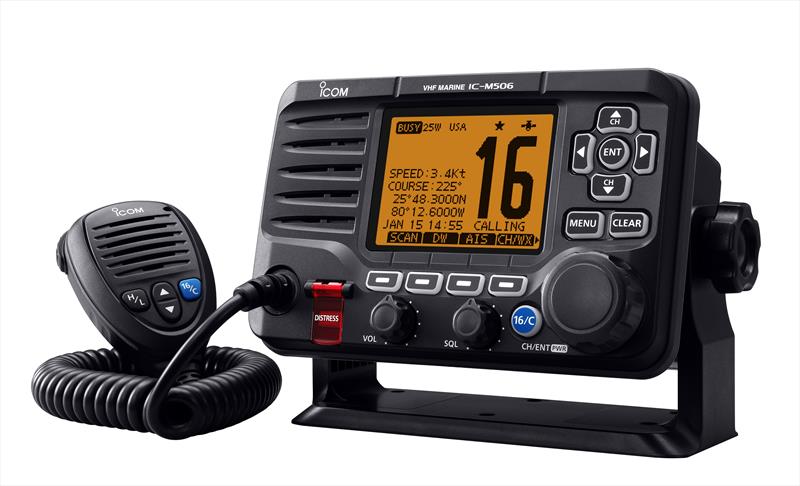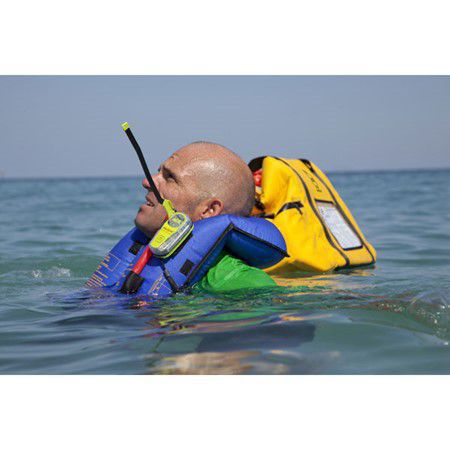VHF Radio

The FCC does not require operators of recreational vessels to carry a radio or to have an individual license to operate VHF marine radios (with or without digital selective calling capability), EPIRBs, or any type of radar. If you own one, you must follow the procedures and courtesies required of licensed operators specified in the FCC rules. Use the name or boat's registration number to identify your boat.
Brochure All About Marine VHF Radios
Vessels (boats) required to be FCC licensed:
1. Vessels that use MF/HF single-sided band radio, satellite communications, or telegraphy.
2. Power-driven vessels over 65.6 feet (20 meters) in length.
3. Vessels used for commercial purposes including:
a. Vessels documented for commercial use, including commercial fishing vessels.
b. U.S. Coast Guard inspected vessels carrying more than six passengers.
c. Towboats longer than 25 feet (7.8 meters) in length.
d. Vessels more than 100 tons certified to carry at least one passenger.
e. Cargo ships over 300 tons.
4. Any vessel, including a recreational vessel, on an international voyage.
Radio Listening Watch
If you're not required to carry a marine radio but choose to voluntarily, tune in to channel 16 (156.800 MHz) whenever the radio is operating and not being used to communicate. You can also listen to VHF channel 9 (156.450 MHz), the “boater-calling" channel.
Emergency Assistance Protocol-Channel 16
• Speak clearly and transmit “Mayday, Mayday, Mayday… this is (boat name/OR number), (boat name/OR number), (boat name/OR number).”
• Report your location latitude and longitude if known, or we are 3 miles west of Tongue Point; “or, last seen reference point (buoy, landmark, etc.).”
• Report the nature of your emergency (swamping, onboard fire, collision, etc.).
• Report the number of people on board including yourself.
•
Wait 10 seconds for a response and if there is none, repeat the message protocol.
Be prepared to give the following information:
•
Describe the boat and its
seaworthiness (“Boat is a 30-foot white cabin cruiser with a blue canopy. Engine flooded and the boat is in danger of sinking.”)
•
Condition of any injured persons.
•
What
help do you need (“Need to have people removed from the boat, and we need a pump and tow.”)
Cell phones, although great for communication on land, may not work in an emergency situation out on the water. Several disadvantages include:
•
Geography may limit or block cell phone signal
•
Caller’s location cannot be determined using the radio direction finders
•
911 calls from maritime locations are frequently misdirected to police or fire departments, which can delay a water rescue response
•
Cell phones cannot be monitored by other boaters
• It may not be possible for the caller to be contacted by the rescue boat or plane
If a cell phone is your only means of making a distress call, take the following precautions before leaving the dock:
•
Make sure the cell phone battery is fully charged
•
Keep the cell phone in a waterproof bag (Dry Bag) that floats
•
Have the U.S. Coast Guard and other appropriate water rescue phone numbers programmed into your cell phone
•
When you first place the distress call, immediately give your:
-
Cell phone number, vessel name and/or description position and/or location, nature of the emergency number of people on board. Repeat the cell phone number before ending the phone call.
-
Speak slowly so that you can be clearly understood.
Emergency Communication Devices
EPIRB
An Emergency Position Indicating Radio Beacon, or EPIRB, is a device used to alert Search and Rescue Teams in the event of an emergency. EPIRBS sends a coded message on the 406 MHz distress frequency via a satellite and earth stations to the nearest Rescue Coordination Center. They notify the nearest Search and Rescue Team. EPIRBs can be automatically (Category I) or manually (Category II) deployed, or both (Category I).
If your EPIRB transmits GPS coordinates, Search and Rescue Teams are notified of your position in as little as 2-3 minutes. An EPIRB is for one's boat and is registered to the vessel. Mount in an area on the vessel where it's easily accessible (Category I). EPIRBs can also be carried in a ditch bag, which is a compact floating bag designed to hold items a boater may need in an emergency (Category II).
Boaters often prefer an EPIRB over a PLB (Personal Locator Beacon). EPIRBs, once placed in the water, will operate by self-activating and floating upright in a transmitting position. Because of their simplicity, it is easy to educate others on board about how they work. They are specifically designed for a worst-case scenario with just you and the beacon in the water. Owning a properly installed EPIRB is a sound investment for boaters. This device saves lives during an emergency.
You must register your EPIRB with the National Oceanic and Atmospheric Administration (NOAA) at beaconregistration.noaa.gov. It's easy and only takes a few minutes. If your contact information changes (phone number, address, sold or bought a new boat), you must update your registration. If you sell your boat, instruct the new owner on how to update the registration as well, or you may be contacted by rescue authorities if it is activated.
PLB -Personal Locator Beacon
A Personal Locator Beacon, or PLB, works in the same way as an EPIRB by sending a coded message on the 406 MHz distress frequency via satellite and earth stations to the nearest Rescue Coordination Center, which then notifies local Search and Rescue Teams. A PLB is registered to the person, not a vessel, and may be used on land and water. However, PLBs require a little more effort to operate, because they must be manually activated. They may also need to be held out of the water to function properly even though they are waterproof.
PLBs are small enough to carry on your person so they are well-suited for boaters to attach to a life jacket, pocket, or purse. But, if a PLB is not attached to your life jacket, you may not have it when you need it the most. Wearing a life jacket is the simplest life-saving strategy for recreational boaters.
You must register your PLB with the National Oceanic and Atmospheric Administration (NOAA) at beaconregistration.noaa.gov – it is very easy and takes just a few minutes which might become a lifetime of survival. If any of your information changes (phone number, address, marital status), you must update your registration. (Source: ACR Electronics Inc., The Science of Survival: A Boater's Guide to EPIRBs, 2012, acrartex.com).